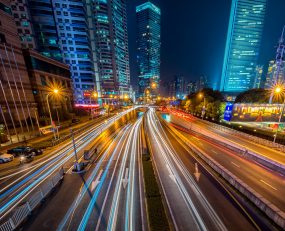
As I begin to write this brief, the markets are in free fall, it seems like fear is spreading faster than its root cause, the Coronavirus. Enough is being written and said on the virus and its impact to “normalcy” either through the CDC or WHO sites and while it is disheartening to see the number of fatalities increase, this is not a brief that addresses that. Early in the onset and spread of this virus, John Manners-Bell wrote eloquently on the long-term implications of epidemics and challenges to the Supply Chain. While, a couple of months ago, along with the fatalities the talk was about the supply shock to the economies globally; today demand shock – the significant hit to travel & leisure and entertainment – seems to be receiving the scrutiny and stimulus that it deserves.
With a nod to C-TPAT (Customs Trade Partnership Against Terrorism), the focus of this brief will be on the impact that it has on the Supply Chain in comparison to other major, disruptions including calamities and disasters this century. C vs. TPAT (Coronavirus vs. Tsunami, Protectionism and Tariffs). I am sure Supply Chain professionals smarter than me can/have learn/ed lessons from each of these disruptions to tweak their supply chain, especially because these highly disruptive lower probability black swan events are occurring with greater frequency.
There is no gainsaying the fact that China’s shadow on the global economy has lengthened substantially since the SARS epidemic almost 20 years ago. Even as it spread, the US economy was recovering from the Dotcom bubble and China had not become the dominant manufacturing basket of the world. In this instance, Covid-19 following the trade and tariff battles of the past two years seems to compound the shock. Of course, it does not help that the impact is widespread in Japan and South Korea. SARS is, perhaps, not the correct yardstick to compare the supply chain disruptions today and in the near term. At least from a Supply Chain perspective, the earthquake in Japan exactly 9 years ago or the floods in Thailand may serve as better markers for lessons learned.
The 2011 Japan earthquake and Tsunami unravelled the famed just-in-time system pioneered by the large Japanese firms, led by Toyota, at least temporarily. It, however, resulted in the major auto firms/suppliers adding additional manufacturing capability/location, rethinking inventory on hold and even the way they source and produce a majority of the parts in a car assembly. While the supply chain was on autopilot (pun unintended), the major firms took months to identify and create a comprehensive database of all suppliers and prepare themselves for future emergencies.
Since the earthquake in Japan, we have experienced floods in Thailand which again impacted the tech and automotive supply chains. Along with natural challenges, there has been a significant change in the political landscape in several major countries. Arguably these political changes – a la UK, US, India – will have a more significant impact on the supply chain as these natural disasters. Protectionism is here to stay
Recently, a Wall Street Journal article highlighted the slowdown in trade between China & US and its overall impact on global trade. The article cited IMF data to highlight the fact that growth in global trade fell from 6% in 2017 to 1% in 2019. While the beneficiaries of the US-China trade war were their neighbours, with several firms setting up additional operations/facilities in those countries whether it was Vietnam/Cambodia or Mexico/Canada, the US consumer and farmers were impacted the most.
While alternative locations, to mitigate risk, were being scouted for production and sustainability reasons, I expect this to accelerate over the next few years largely driven by the current events. I reckon that most large firms will migrate to a tri-polar strategy for their supply chain. With SARS and the Japan earthquake, the expectation was that most firms would hedge their bets and source from multiple geographies, however, costs and inertia played in role in the postponement of those decisions. Also, the dilemma that most firms will have in setting up alternative production locations is to ensure that consumers (prodded by the government) in countries like China do not abandon their brands and go local, thereby ceding a very large market. While it may take several years, it is easier for a consumer electronics firm like Apple to migrate than it is for chip manufacturer. Regardless a firm like Tesla, which has set up a factory in China and is in the process of building one near Berlin, have seen where the market is and have positioned themselves to move/increase production as needed.
I know we have heard this plenty of times before, “this time it is different”. While I suspect that almost all Fortune 1000 firms should revisit their supply chain, the innovators who source their entire product portfolio from a single country will also have to rethink their strategy. I believe this is a role that large Logistics firms have ceded to product marketing and development professionals and would be better positioned to serve. Only time will tell if indeed “this time it was different”.
This is a guest post from Raghu Ramachandran of 13 Colony Global LLC. you can contact Raghu at [email protected]
Source: Transport Intelligence, March 17, 2020
Author: Raghu Ramachandran